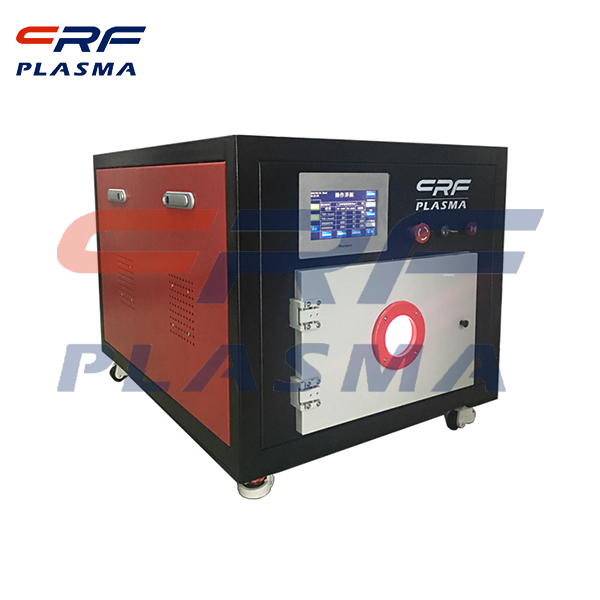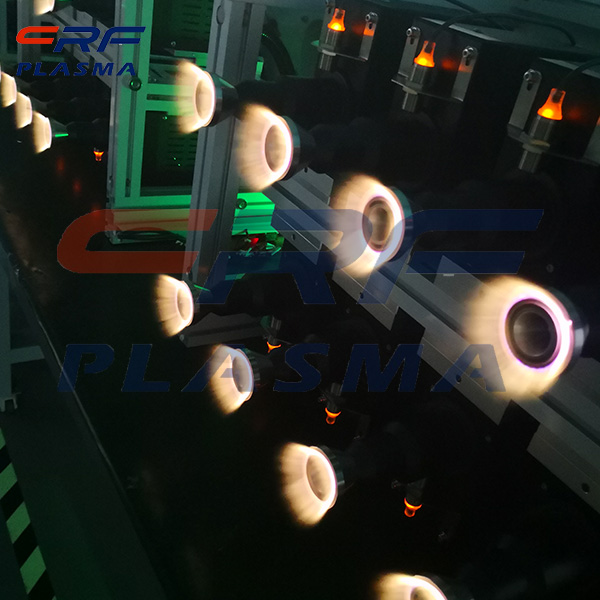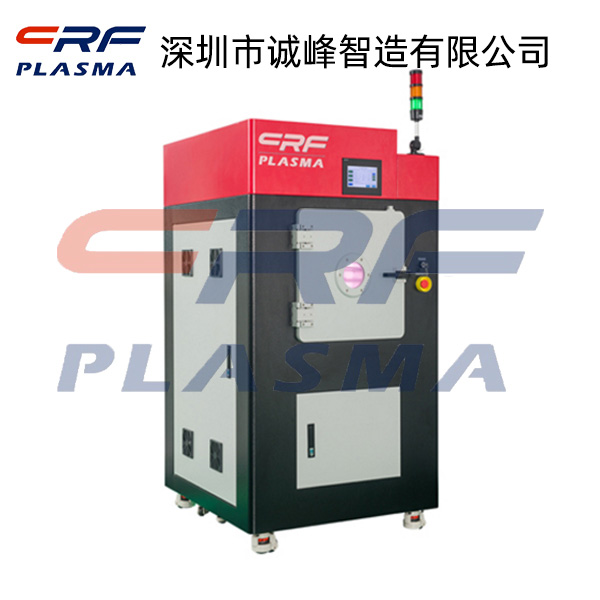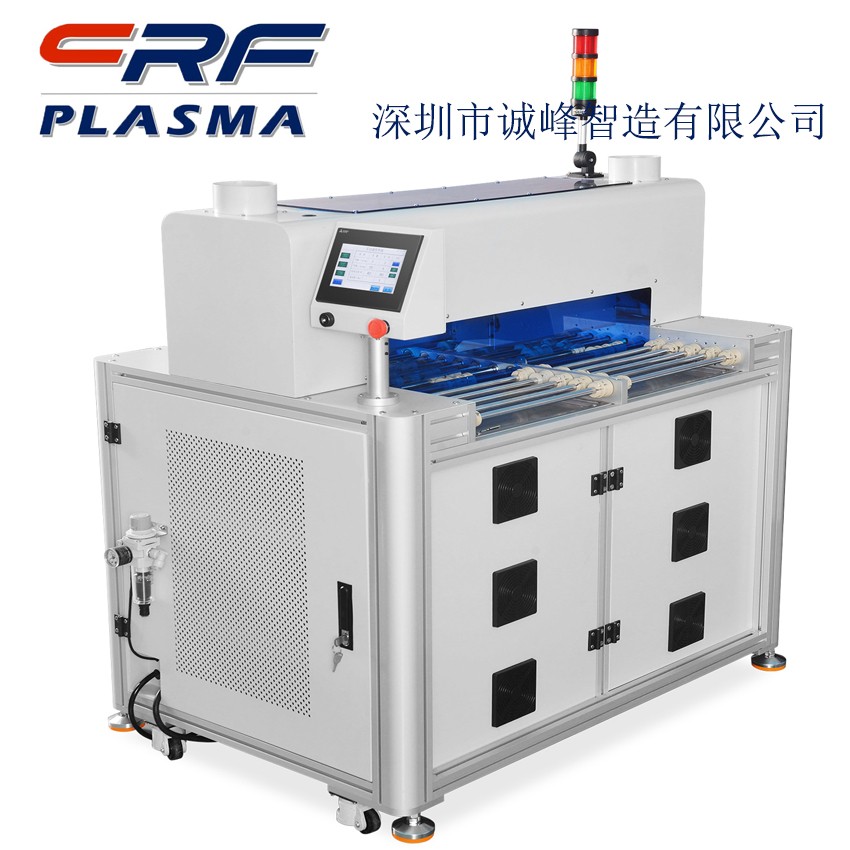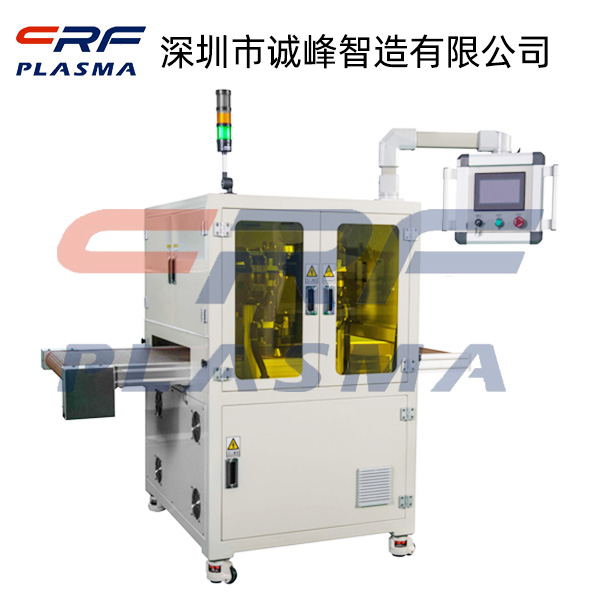
Welcome to Shenzhen Sing Fung Intelligent Manufacturing Co., Ltd.
E-mail:shaobo@sfi-crf.com
Plasma treatment of PP fiber composite interface with low temperature plasma treatment instrument
- Categories:Industry News
- Author:Plasma cleaning machine-CRF plasma plasma equipment-plasma surface treatment machine manufacturer-chengfeng intelligent manufacturing
- Origin:
- Time of issue:2021-07-06
- Views:
(Summary description)Plasma treatment of PP fiber composite interface with low temperature plasma treatment instrument: The advantage of using dielectric barrier discharge (DBD) for plasma treatment of low temperature plasma treatment instrument is that the working environment of the plasma it generates can be close to or equal to atmospheric pressure. Moreover, one or two kinds of media can be used to make electrodes into various shapes, which can be used in practical work under different frequencies. Specific dielectric barrier discharge is a powerful tool to improve the surface properties of polymer materials. Compared with the discharge generated by continuous sinusoidal voltage, the repetitive pulse voltage it uses is more conducive to improving the statistical distribution and sensitivity of microdischarges. Routine handling of materials. At the same time, DBD has better uniformity than corona discharge plasma treatment under atmospheric pressure. In addition, since DBD is a discharge technology under atmospheric pressure, a relatively complicated vacuum system is not required. Therefore, it is particularly suitable for industrialized continuous processing and its application prospects are very broad. The interface characteristics between the fiber and the matrix is one of the key factors that determine the overall performance of the fiber-reinforced composite material. In most fiber-reinforced composite materials, there is a huge difference in performance between the fiber and the matrix as the reinforcing material, and the compatibility between the two is quite limited, so the bonding of the interface is often weak. Therefore, in the actual material processing process, the fiber surface must be properly treated to improve the interface performance of the composite material. Among the many surface treatment methods, the plasma treatment of the low temperature plasma treatment instrument attracts attention for its high efficiency, low energy consumption and no pollution. The surface of the fiber that has not been treated by the low-temperature plasma treatment device DBD is very smooth, but after the plasma treatment, the surface of the fiber quickly becomes rough and pits are formed. As the treatment time increases, the roughness of the fiber surface increases, and the etching effect becomes more obvious. Low-temperature plasma treatment instrument DBD plasma treatment increases the roughness of the fiber surface, the interface bonding between the fiber and the matrix and the friction when pulling out, and the average pulling force increases. Low temperature plasma treatment instrument DBD plasma treatment process, oxygen implants on the surface of the fiber, and combines with the carbon atoms of the fiber to form different active groups, which is conducive to the interface bonding between the fiber and the matrix.
Plasma treatment of PP fiber composite interface with low temperature plasma treatment instrument
(Summary description)Plasma treatment of PP fiber composite interface with low temperature plasma treatment instrument:
The advantage of using dielectric barrier discharge (DBD) for plasma treatment of low temperature plasma treatment instrument is that the working environment of the plasma it generates can be close to or equal to atmospheric pressure. Moreover, one or two kinds of media can be used to make electrodes into various shapes, which can be used in practical work under different frequencies.
Specific dielectric barrier discharge is a powerful tool to improve the surface properties of polymer materials. Compared with the discharge generated by continuous sinusoidal voltage, the repetitive pulse voltage it uses is more conducive to improving the statistical distribution and sensitivity of microdischarges. Routine handling of materials.
At the same time, DBD has better uniformity than corona discharge plasma treatment under atmospheric pressure. In addition, since DBD is a discharge technology under atmospheric pressure, a relatively complicated vacuum system is not required. Therefore, it is particularly suitable for industrialized continuous processing and its application prospects are very broad.
The interface characteristics between the fiber and the matrix is one of the key factors that determine the overall performance of the fiber-reinforced composite material. In most fiber-reinforced composite materials, there is a huge difference in performance between the fiber and the matrix as the reinforcing material, and the compatibility between the two is quite limited, so the bonding of the interface is often weak.
Therefore, in the actual material processing process, the fiber surface must be properly treated to improve the interface performance of the composite material. Among the many surface treatment methods, the plasma treatment of the low temperature plasma treatment instrument attracts attention for its high efficiency, low energy consumption and no pollution.
The surface of the fiber that has not been treated by the low-temperature plasma treatment device DBD is very smooth, but after the plasma treatment, the surface of the fiber quickly becomes rough and pits are formed. As the treatment time increases, the roughness of the fiber surface increases, and the etching effect becomes more obvious.
Low-temperature plasma treatment instrument DBD plasma treatment increases the roughness of the fiber surface, the interface bonding between the fiber and the matrix and the friction when pulling out, and the average pulling force increases.
Low temperature plasma treatment instrument DBD plasma treatment process, oxygen implants on the surface of the fiber, and combines with the carbon atoms of the fiber to form different active groups, which is conducive to the interface bonding between the fiber and the matrix.
- Categories:Industry News
- Author:Plasma cleaning machine-CRF plasma plasma equipment-plasma surface treatment machine manufacturer-chengfeng intelligent manufacturing
- Origin:
- Time of issue:2021-07-06 23:46
- Views:
Plasma treatment of PP fiber composite interface with low temperature plasma treatment instrument:
The advantage of using dielectric barrier discharge (DBD) for plasma treatment of low temperature plasma treatment instrument is that the working environment of the plasma it generates can be close to or equal to atmospheric pressure. Moreover, one or two kinds of media can be used to make electrodes into various shapes, which can be used in practical work under different frequencies.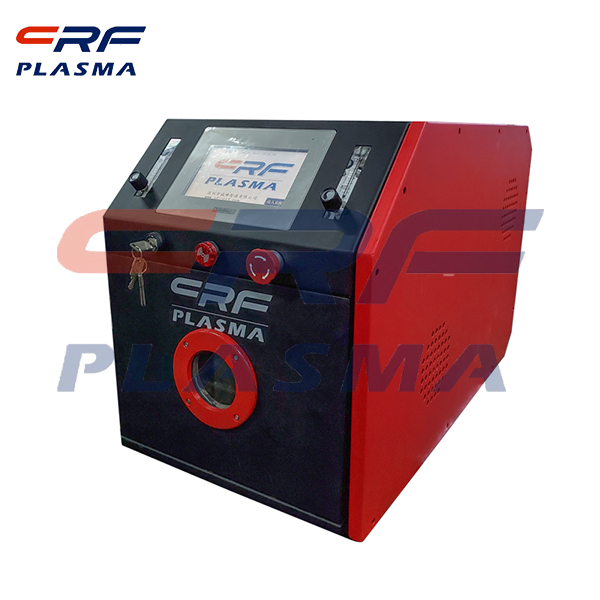 Specific dielectric barrier discharge is a powerful tool to improve the surface properties of polymer materials. Compared with the discharge generated by continuous sinusoidal voltage, the repetitive pulse voltage it uses is more conducive to improving the statistical distribution and sensitivity of microdischarges. Routine handling of materials.
Specific dielectric barrier discharge is a powerful tool to improve the surface properties of polymer materials. Compared with the discharge generated by continuous sinusoidal voltage, the repetitive pulse voltage it uses is more conducive to improving the statistical distribution and sensitivity of microdischarges. Routine handling of materials.
At the same time, DBD has better uniformity than corona discharge plasma treatment under atmospheric pressure. In addition, since DBD is a discharge technology under atmospheric pressure, a relatively complicated vacuum system is not required. Therefore, it is particularly suitable for industrialized continuous processing and its application prospects are very broad.
The interface characteristics between the fiber and the matrix is one of the key factors that determine the overall performance of the fiber-reinforced composite material. In most fiber-reinforced composite materials, there is a huge difference in performance between the fiber and the matrix as the reinforcing material, and the compatibility between the two is quite limited, so the bonding of the interface is often weak.
Therefore, in the actual material processing process, the fiber surface must be properly treated to improve the interface performance of the composite material. Among the many surface treatment methods, the plasma treatment of the low temperature plasma treatment instrument attracts attention for its high efficiency, low energy consumption and no pollution.
The surface of the fiber that has not been treated by the low-temperature plasma treatment device DBD is very smooth, but after the plasma treatment, the surface of the fiber quickly becomes rough and pits are formed. As the treatment time increases, the roughness of the fiber surface increases, and the etching effect becomes more obvious.
Low-temperature plasma treatment instrument DBD plasma treatment increases the roughness of the fiber surface, the interface bonding between the fiber and the matrix and the friction when pulling out, and the average pulling force increases.
Low temperature plasma treatment instrument DBD plasma treatment process, oxygen implants on the surface of the fiber, and combines with the carbon atoms of the fiber to form different active groups, which is conducive to the interface bonding between the fiber and the matrix.
Scan the QR code to read on your phone

TEL:0755-3367 3020 / 0755-3367 3019

E-mail:sales-sfi@sfi-crf.com

ADD:Mabao Industrial Zone, Huangpu, Baoan District, Shenzhen




